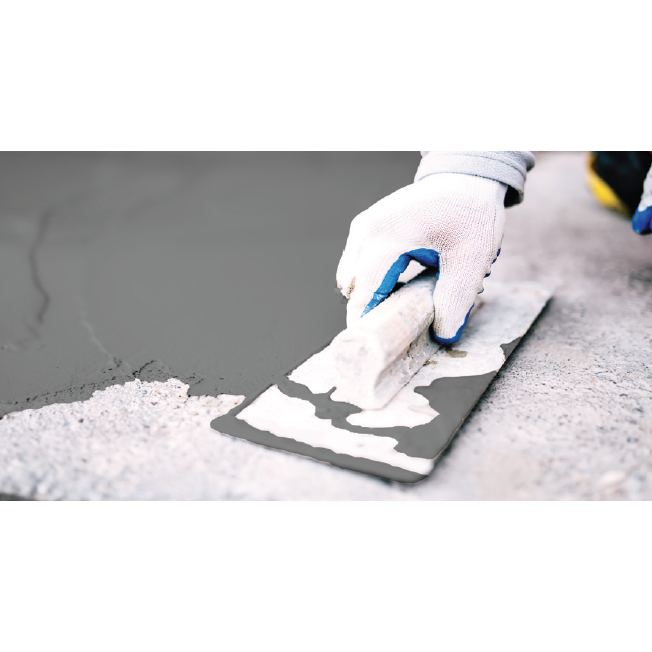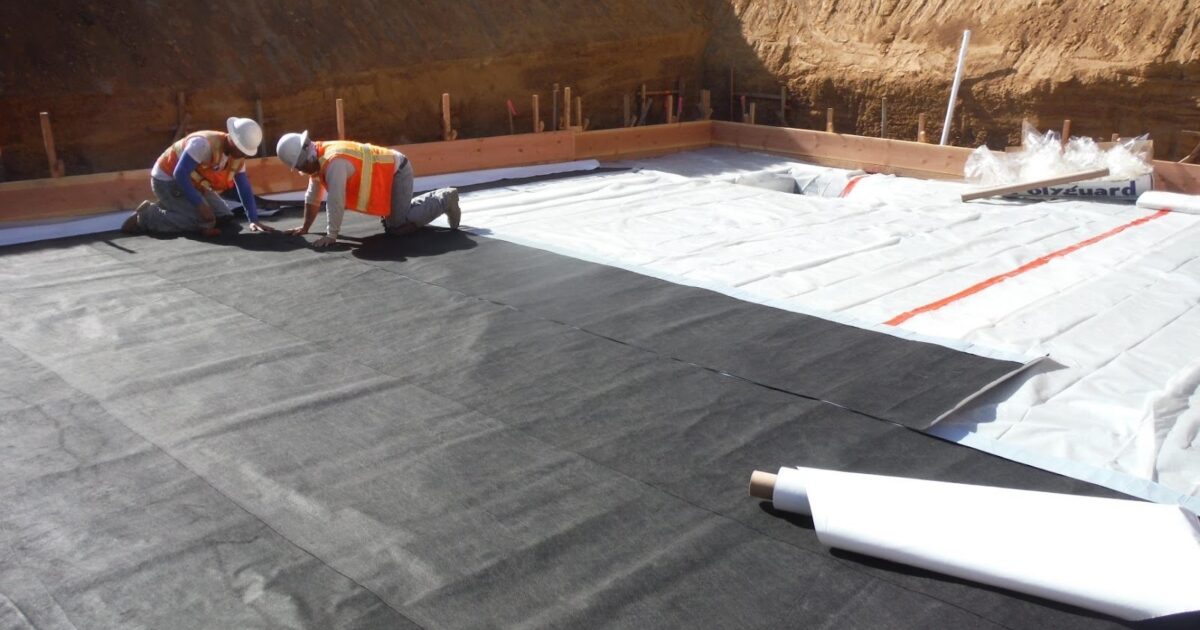Foundation waterproofing Omaha: The Long-Term Investment
How Waterproofing Works: A Comprehensive Look at Techniques and Technologies
Waterproofing is important for securing structures from moisture-related damages. It involves numerous methods and technologies that create obstacles against water breach. Conventional methods, such as compressed clay, coexist with modern-day technologies like liquid-applied membrane layers. Comprehending the nuances of these methods is important for reliable application. Nevertheless, the effectiveness of any waterproofing service hinges not only on the techniques used however also on ongoing upkeep and examination. What are the essential elements that influence lasting efficiency?
Recognizing the Essentials of Waterproofing
Waterproofing is a crucial procedure that protects frameworks from water invasion, which can cause significant damages in time. This technique involves the application of numerous products and strategies developed to create an obstacle versus dampness. The key goal is to stop water from penetrating surface areas, which can create wear and tear, mold growth, and structural instability.Various variables influence the option of waterproofing approach, consisting of the sort of framework, its location, and ecological conditions. Recognizing the physics of water movement and the buildings of different products is crucial in picking an effective waterproofing solution.Effective waterproofing not just safeguards buildings but also improves their long life and honesty. Commonly, it is incorporated into the style stage of construction to guarantee comprehensive security. As understanding of water-related problems grows, the significance of comprehending waterproofing basics ends up being progressively clear to architects, builders, and homeowner alike.
Conventional Waterproofing Methods
Traditional waterproofing approaches have actually been utilized for centuries, relying upon time-tested strategies and products to secure structures from water damage. Among the earliest techniques entails using clay, which, when compacted, develops a natural obstacle against dampness. Furthermore, bitumen, a sticky, black material originated from oil, has been utilized for its waterproof buildings, often related to roofing systems and foundations.Another method includes the application of lime-based plasters, which provide a breathable layer that allows moisture to escape while avoiding water access. Thatch roof covering, a typical approach still seen in some societies, offers superb waterproofing because of its snugly loaded straw layers.Moreover, using stone and block has actually projected, as these materials are inherently resistant to water when properly mounted. Overall, traditional waterproofing techniques highlight the significance of picking proper products and building practices to improve toughness versus water invasion.
Modern Waterproofing Technologies
Improvements in modern waterproofing modern technologies have actually revolutionized the way structures are protected from water damage. Innovative strategies such as liquid-applied membrane layers and sophisticated sealers have enhanced the efficiency and flexibility of waterproofing remedies. These technologies permit for smooth application, minimizing the danger of leaks and making certain detailed insurance coverage over intricate surfaces.Moreover, the integration of smart modern technologies, such as wetness sensors and automated monitoring systems, allows real-time assessment of waterproofing performance. This positive technique assists in prompt upkeep and minimizes long-term fixing costs.Additionally, improvements in spray-applied coatings use quick application and outstanding adhesion, adjusting to various substratums while offering durable protection. Techniques like polymer-modified systems further improve flexibility and toughness, making them ideal for varied environments. On the whole, modern waterproofing innovations not just reduce water invasion but additionally add to the durability and sustainability of structures, noting a considerable shift in the sector.
Products Used in Waterproofing
The effectiveness of waterproofing remedies heavily relies upon the materials utilized in their application. Numerous products are employed to produce barriers versus water ingress, each with one-of-a-kind residential or commercial properties suited for various atmospheres. Commonly used products include membranes, coatings, and sealants.Liquid-applied membrane layers, commonly made from polyurethane or acrylic, develop a seamless obstacle that adjusts to complicated surface areas. Sheet membrane layers, typically constructed from rubber or polycarbonate, deal toughness and are ideal for larger locations. In addition, cementitious waterproofing products, made up of cementitious compounds, give superb adhesion and flexibility.Sealants made from silicone or polyurethane are important for joints and seams, making certain thorough protection. Moreover, advanced products, such as geo-composite membranes, combine multiple functions, enhancing efficiency. In general, the selection of waterproofing materials is crucial in achieving lasting and reliable water resistance, customized to particular job demands and environmental problems.
Common Applications of Waterproofing
Waterproofing plays a necessary function in different industries, guaranteeing the longevity and integrity of frameworks. Typical applications include household remedies that secure homes, industrial infrastructure that safeguards organizations, and industrial setups that need durable security against dampness. Recognizing these applications highlights the value of waterproofing in maintaining both security and capability across different settings.
Residential Waterproofing Solutions
Several homeowners encounter difficulties with dampness breach, making reliable residential waterproofing solutions essential. Numerous methods exist to resolve this issue, consisting of exterior and interior waterproofing systems. Inside services typically include the application of sealers and layers to basement wall surfaces, which aid prevent water infiltration. Exterior approaches commonly include the setup of water drainage systems and waterproof membrane layers that divert water far from the foundation.Additionally, house owners might take into consideration sump pumps to remove water build-up and dehumidifiers to regulate humidity levels. Appropriate grading and using seamless gutters also play an important role in taking care of water circulation around the home. By executing these approaches, homeowners can significantly lower the threat of water damages and mold and mildew growth, guaranteeing a dry and secure living setting.

Business Infrastructure Defense
Efficient waterproofing services play an essential role in the security of business infrastructure. French drain installation Omaha. These strategies are important for safeguarding buildings, parking frameworks, and bridges from water damages, which can jeopardize architectural stability and lead to expensive repair work. Common applications include the installation of membranes, layers, and sealers that create barriers against dampness seepage. Locations such as basements, roof coverings, and exterior wall surfaces are commonly focused on to guarantee long life and resilience. In addition, waterproofing systems can improve energy performance by avoiding water-related issues that might bring about mold and mildew growth and deterioration. By implementing robust waterproofing procedures, residential or commercial property proprietors can protect their financial investments and preserve operational performance, ultimately adding to the overall sustainability of business centers
Industrial Applications Overview
While different fields encounter distinct difficulties, the requirement for dependable waterproofing services stays a constant in commercial applications. Industries such as manufacturing, construction, and energy typically experience settings where moisture direct exposure can threaten structural honesty and functional performance. In manufacturing centers, waterproofing is important for safeguarding machinery and products from water damage. In building, it safeguards foundations and basements against groundwater seepage. The energy field counts on waterproofing for the defense of devices in hydroelectric plants and overseas frameworks. In addition, food processing sectors utilize waterproofing to ensure hygiene and conformity with safety criteria. Generally, effective waterproofing services are crucial for boosting longevity, safety, and performance throughout various commercial settings.
Maintenance and Durability of Waterproofing Solutions
Waterproofing remedies are made to provide long-lasting protection versus wetness intrusion, routine maintenance is important to assure their performance and durability. Routine inspections play a considerable function in identifying prospective concerns such as fractures, peeling, or signs of water damages. Dealing with these issues immediately can stop additional wear and tear and costly repairs.Additionally, cleaning up the surface area of waterproof locations aids remove dust and debris that can compromise the stability of the waterproofing barrier. It's additionally suggested to reapply safety coverings or sealants as suggested by producers to maintain ideal performance. Environmental elements, such as UV exposure and extreme climate condition, can affect the lifespan of waterproofing materials, making normal evaluation important
Frequently Asked Inquiries
Can Waterproofing Be Applied in Cold Weather Condition?
The concern of using waterproofing in winter raises issues concerning adhesion and healing. Many products might not do at their ideal in low temperature levels, requiring mindful option and factor to consider of specific guidelines for efficient application.
Just How Lengthy Does Waterproofing Generally Last?
The duration of waterproofing effectiveness varies based upon materials and environmental factors. Generally, it can last from 5 to 10 years, yet routine upkeep and assessments are vital to assure peak efficiency and longevity.
Is Do It Yourself Waterproofing Effective and Safe?
The efficiency and safety and security of do Drainage & waterproofing company Omaha it yourself waterproofing depend upon numerous variables, consisting of material high quality and application method. While some individuals attain acceptable results, others might experience problems that compromise lasting security and architectural honesty.
What Are the Indicators of Failing Waterproofing?
Signs of stopping working waterproofing include visible water stains, peeling paint, mold development, musty smells, and moisture in wall surfaces or ceilings - Yard drainage Omaha. These indications suggest compromised barriers, necessitating punctual inspection and potential removal to avoid more damage
How Do I Pick the Right Waterproofing Professional?
